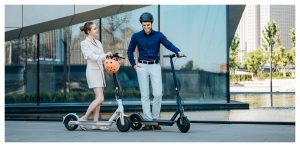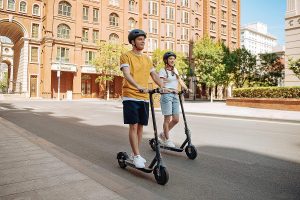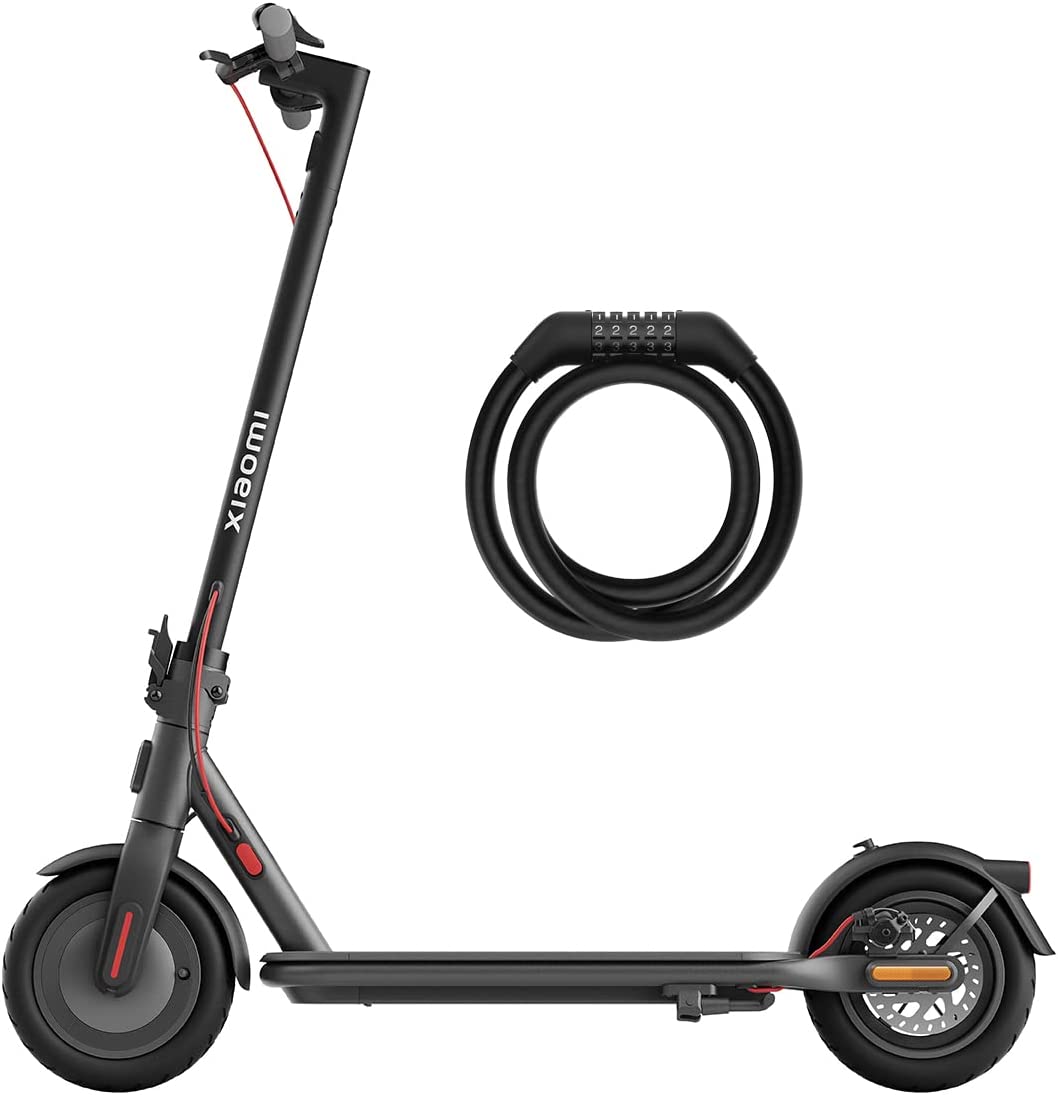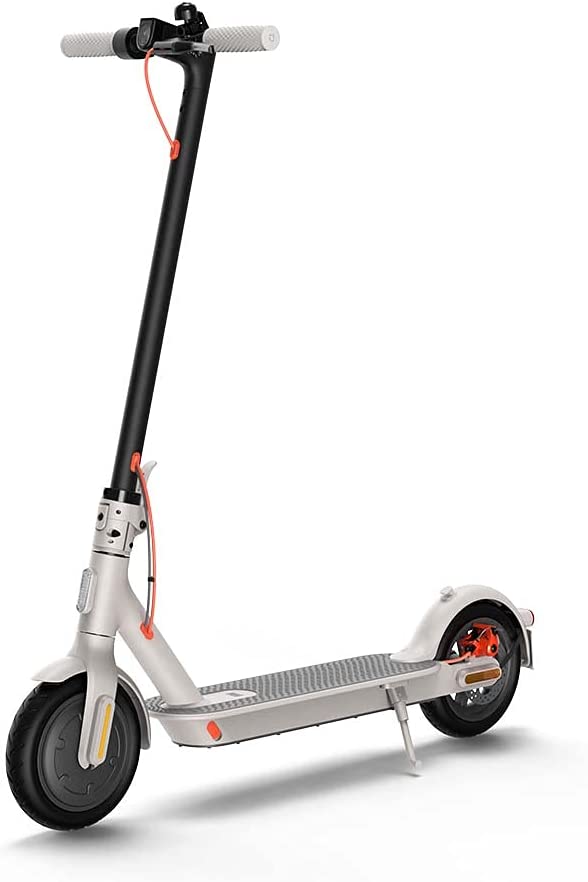You know that feeling when your commute suddenly clicks—when dodging traffic, hopping curbs, and weaving past parked cars feels not just easy, but smooth? Yeah, that’s when your electric scooter stops being just transport and starts being freedom. And if you’re choosing between Xiaomi’s Electric Scooter 3 and Electric Scooter 4, you’re already on the right track. But hey, they look so similar it almost feels like they’re twins, right? Don’t let that fool you. Under the surface, the Electric Scooter 4 brings a few smart improvements that could quietly transform your daily ride.
Whether you’re grabbing your first scooter or wondering if it’s time to upgrade from your current one, we’ve taken both models out for a spin, and we’ve paid attention to everything—from tires to folding hinges. Because when you’re zipping through the city, every tiny detail adds up. Let’s get into what’s actually different here—and what’s not.
Same silhouette, but with a few interesting tweaks

You’d have to look closely to spot the difference at first. The Electric Scooter 3 keeps things clean and familiar with a choice between grey and black, while the Electric Scooter 4 sticks to an all-black look that feels sleeker but a bit more serious. That splash of grey on the 3 adds a tiny bit of personality—maybe even charm—but not everyone’s looking for that.
The Xiaomi logo placement shifts too—it’s clearly printed on the front tube of the Scooter 4, whereas it’s missing from the same spot on the 3. It’s a branding move that doesn’t change how the scooter rides but gives the 4 a slightly more premium look.
The folding mechanism? Also reworked, if only slightly. On the Scooter 3, the hinge sits behind the front tube, but on the Scooter 4, it’s placed at the front. It’s not game-changing, but the subtle repositioning hints at Xiaomi thinking more ergonomically—maybe shaving off an awkward angle in the folding process.
Power and hill climbing: no surprises here
Now, here’s where things get predictable. Both models run on a brushless motor with a peak output of 600W and a consistent output of 300W, which means they move with the same punch. You won’t notice any performance leap when accelerating or climbing light inclines.
They both handle slopes up to 16%, which is decent for typical urban routes. But don’t expect them to cruise effortlessly up San Francisco-style hills. For that kind of muscle, you’d need to look at a different category altogether.
So, on flat ground or gentle slopes, both the 3 and 4 perform identically. This part of the ride stays the same no matter which one you pick.
The 4 goes the distance—literally
Here’s where the first real divide appears. Even though both scooters share the same 7650 mAh battery and a similar 5 to 6-hour charging time, the Electric Scooter 4 goes just a bit farther.
The Scooter 3 tops out at 30 kilometers per charge, while the Scooter 4 stretches that to 35 kilometers. Five kilometers might sound small, but think about it: that’s an extra commute, an unexpected detour, or a spontaneous coffee run without worrying about a dying battery.
There’s also a sleep mode built into the 4. If its battery drops below 30% and stays unplugged for 10 days, the scooter puts itself to sleep to protect battery life. It’s a low-key but thoughtful feature—especially if you’re not riding every single day.
Braking? Basically twins
Nothing changes much in terms of safety here. Both scooters rely on a dual braking system: an eABS in the front and a disc brake in the rear. The combo delivers solid braking power whether you’re cruising slowly or sprinting toward a red light.
The larger frame of the Electric Scooter 4 might help it feel marginally more planted during sudden stops, but let’s be honest—it’s a subtle difference that you’ll barely register unless you’re riding both back to back.
Bigger tires, smoother glide

This is the part that really makes you feel the upgrade. The Electric Scooter 4 rides on 10-inch wheels, while the Scooter 3 sticks with 8.5-inch ones. That extra 1.5 inches? Total game changer.
Larger tires mean better shock absorption, less vibration on uneven pavement, and more comfort over long distances. Potholes, sidewalk cracks, rough patches—everything feels just a bit easier to handle on the 4.
It’s not just about comfort either. The 10-inch wheels offer more stability when turning or braking, especially at higher speeds. The difference is obvious after just a few blocks.
Folding and carrying: a trade-off
Yes, both fold. And yes, both fold quickly. But the Electric Scooter 4’s folding mechanism has a new placement that may feel slightly more intuitive for some users. It’s nothing revolutionary, but it fits with the theme of refinement.
Now, let’s talk about what really affects portability: weight.
The Electric Scooter 3 weighs just 13.2 kilograms. The Electric Scooter 4? A heavier 17.2 kilograms. That’s four extra kilos you’re hauling up stairs or lifting into your car. For anyone living in a walk-up apartment or using public transit daily, that might be a deal-breaker.
Still, the added weight on the 4 likely contributes to its more stable build, especially with the bigger wheels and longer range. But yeah—it’s heavier. No escaping that.
Slight bump in weight capacity
This one’s kind of a “just in case” bonus. The Electric Scooter 3 supports up to 100 kilograms of rider weight, while the Scooter 4 raises that limit to 110 kilograms. Not a big change, and most users won’t even come close to maxing out either model.
But if you often ride with a heavy backpack or carry extra gear, those extra 10 kilograms give you a bit more breathing room.
Displays and app support: no surprises
If you’ve seen one Xiaomi scooter dashboard, you’ve basically seen them all. Both the 3 and 4 include the same LED display at the handlebar center, showing your speed, riding mode, and battery level.
And yes, both are compatible with the Mi Home app, which lets you track mileage, monitor battery health, and get firmware updates. It’s handy, sure—but not exclusive to either model.
Functionality and interface? Identical.
Speed modes and lighting: a perfect draw

No change here either. Both models offer three riding modes—Eco, Standard, and Sport, so you can adjust based on battery level, traffic, or how much of a rush you’re in.
And for night rides, you’ve got front and rear LED lights on both scooters, plus reflectors for extra visibility. It’s standard kit, but nice to know nothing was left out during the upgrade.
Size differences that barely matter
Physically, both scooters are about the same length and width when unfolded. The Electric Scooter 4 is slightly taller—barely enough to notice unless you line them up side by side.
When folded, the Scooter 4 is a touch shorter in height, but again, not dramatically so.
The real kicker, as mentioned earlier, is weight. That four-kilo difference changes how you carry them, not how you ride them.
Resistance and durability: par for the course
Both scooters are made from the same materials and built with the same approach to durability. The Electric Scooter 3 officially lists IP54 water resistance, meaning it can handle light rain and dust. The 4 doesn’t specify, but based on feel and finish, we’d expect similar resistance.
Still, don’t get overconfident in a downpour—these are city commuters, not mud racers.
Wrapping it up: the 4 just makes more sense
We didn’t expect the gap to feel so clear, but yeah—after riding both, the Xiaomi Electric Scooter 4 is clearly the smarter pick for most people.
It doesn’t reinvent anything, but it refines everything that matters. The range is longer, the tires are bigger, the ride is smoother, and there’s a small bump in weight capacity. Even the folding mechanism feels more deliberate.
Sure, the Scooter 3 is lighter and a bit easier to lug around, which could make it a better option if you’re hauling it up stairs every day. But in nearly every other aspect—comfort, stability, practicality—the 4 just feels like the more grown-up version.
What surprised us most? How much those 10-inch tires changed the feel of the ride. It’s not something you think about until you hit a bumpy patch, and then suddenly you do.
So if you’re after that smooth glide through the chaos of city traffic, and you want a scooter that makes the journey feel seamless, go for the Electric Scooter 4. It’s not flashier—it’s just better.


